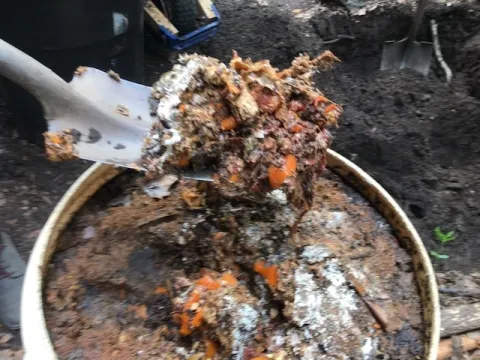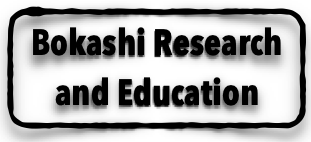Subtitle

Prerequisites: bokashi sprinkle and/or bokashi spray, EM•1, and bokashi food waste.
Fermented food waste can be used in several ways, in addition to adding to the soil. Below, we look at these options.
bokashi food waste (or bokashi fermented food waste, or fermented food waste (FFW), i.e., "food waste fermented by the bokashi method").
The bokashi food waste can be defined or described as follows:
- a soil amendment (a material, when added to soil, can improve the soil's physical and chemical properties)
- stabilized organic matter (i.e., the fermented food waste, which still looks like food waste, where the fermentation has produced substances that prevents or minimizes pathogens and the production of volatile substances, such as ammonia and phytotoxins)
- labile organic matter (liable to change, ready to be broken down by soil microorganisms and other soil organisms [worms, insects] and therefore be a food source for such organisms)
- a microbial inoculant (introduces microorganisms, in the bokashi case, a significant amount and wide variety of microorganisms)
- a soil probiotic (improves the soil microbiome)
- a biofertilizer (contains living microbes that help plants grow by increasing the availability of nutrients; are non-toxic and contain organic substances.)
- a biostimulant (the microbes applied help plants by enhancing nutrition efficiency, abiotic stress tolerance and/or crop quality traits, regardless of the available nutrients)
The following are the main ways in which bokashi food waste can be used:
A. As a soil amendment:
- Trenched/buried in soil:
- Burying in a shallow trench (1 to 2 feet deep)—See trenching details at downtoearthgarden.org.
- Surface trenching (bowl-trenching, or surface mounding), for when the ground is too hard to dig, feeding FFW to soil without digging (just covering fully with soil, i.e., mounding)—See bowl-trenching details at downtoearthgarden.org.
- Burying in small pockets (pocket feeding), especially when there are plants in a garden bed.
- In pots/planters sandwiched between soil—See sandwiching details at downtoearthgarden.org.
- Buried around trees where the tree canopy ends.
B. As greens or feed in composting:
- Mesophilic and/or low thermophilic composting
- Vermicomposting (worm composting, vermiculture)
—See composting details at downtoearthgarden.org.
C. As a feed source for miscellaneous methods:
- To feed Black Soldier Fly larvae
- To produce a topically applicable soil amendment (a mulch) or organic fertilizer
- To be a food source for worms in any type of vermiculture system
